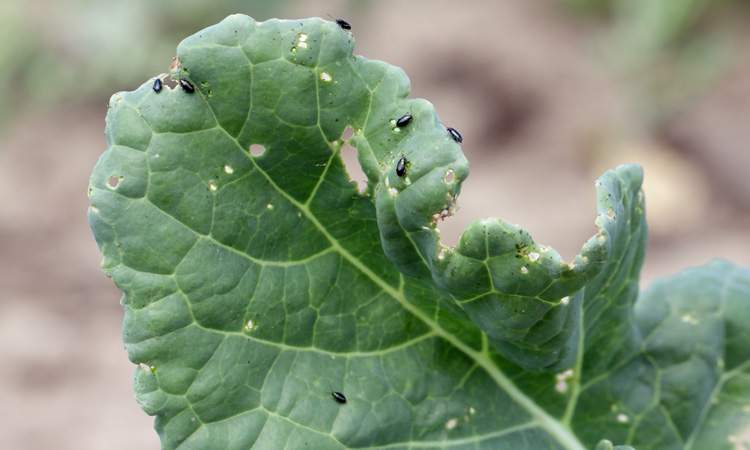Parasitic wasp discovery offers chemical-free pest control for crop growers
- Like
- Digg
- Del
- Tumblr
- VKontakte
- Buffer
- Love This
- Odnoklassniki
- Meneame
- Blogger
- Amazon
- Yahoo Mail
- Gmail
- AOL
- Newsvine
- HackerNews
- Evernote
- MySpace
- Mail.ru
- Viadeo
- Line
- Comments
- Yummly
- SMS
- Viber
- Telegram
- Subscribe
- Skype
- Facebook Messenger
- Kakao
- LiveJournal
- Yammer
- Edgar
- Fintel
- Mix
- Instapaper
- Copy Link
Posted: 26 May 2020 | Sam Mehmet (New Food) | No comments yet
Researchers have determined that the Microctonus brassicae wasp species, and genetically similar parasitic wasps, could be used in controlled conditions as a biocontrol to protect oilseed rape and other crops from damaging pests.


A species of parasitic wasp discovered by chance could provide crop growers with a chemical-free way of controlling a major pest, according to researchers from the John Innes Centre.
Genetic sequencing and enquiries by the Natural History Museum, UK, and the Swedish Museum of Natural History identified the wasp as an obscure species called Microctonus brassicae which was first reported in 2008 with no further identifications until now.
The John Innes Centre researchers made the discovery when the wasps appeared in colonies of cabbage stem flea beetles (CSFB) they were studying to test feeding preferences on oilseed rape. The wasps appeared even though the beetles were confined to potted oilseed rape plants inside micro-perforated bags.
The beetle is considered a major threat to oilseed rape, particularly the winter crop, throughout the UK and Europe. It causes characteristic damage known as “shot-holing” to leaves, often resulting in crop failure or poor crop establishment.
The beetle has become a prominent pest in the UK, particularly in East Anglia, and surrounding counties, following the European ban on neonicotinoid seed treatment use in flowering crops. Figures for 2014 value damage at £23 million with an approximate loss of 3.5 percent of the national crop area of winter oilseed rape to CSFB.
Further exploration revealed that the colonies of around 3,000 beetles collected from three sites around Norfolk had been infected by a parasitic wasp that lays eggs within the beetle’s body.
Experiments showed that within controlled conditions, the presence of wasps in sufficient numbers led to the collapse of CSFB colonies.
Beetle hosts are rendered sterile and die after the wasp larvae emerge from the body after passing through its digestive system. The short generation time of 43.5 days from egg to adult means it would be possible to rapidly rear multiple generations in controlled conditions, according to the researchers. This is said to raise the possibility of employing Microctonus Brassicae and other species of genetically similar parasitic wasps as a biocontrol to protect oilseed rape and a range of commercially important crops prone to attack by CSFB.
“Something that was initially very annoying leading to the collapse of our research colonies has turned out to be fortunate,” said lead author Dr Rachel Wells of the John Innes Centre. “It offers the possibility of using parasitoid wasps as bio-controls for farmers and growers of oilseed rape and brassica vegetables against cabbage stem flea beetle as part of an integrated pest management approach.”
Related topics
Research & development, Sustainability, Technology & Innovation









